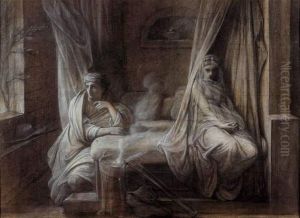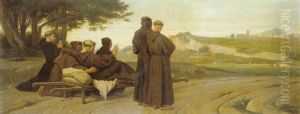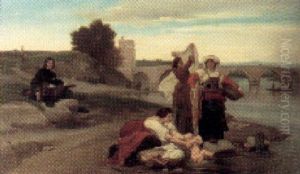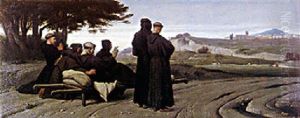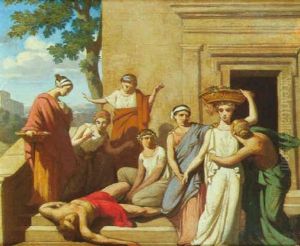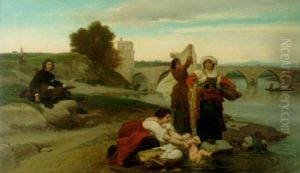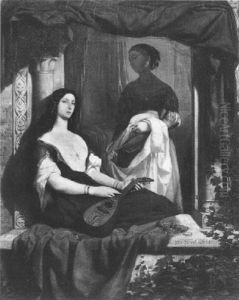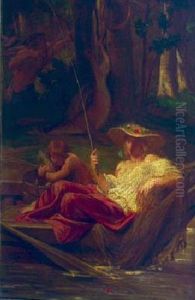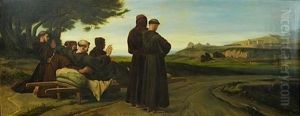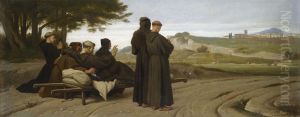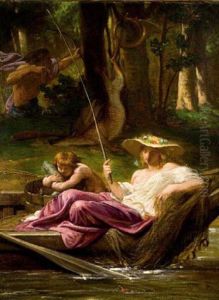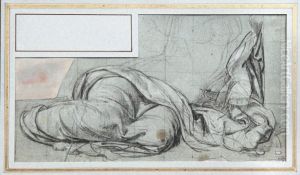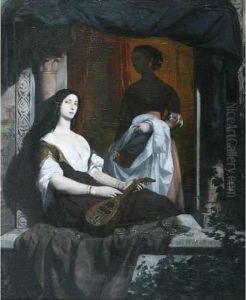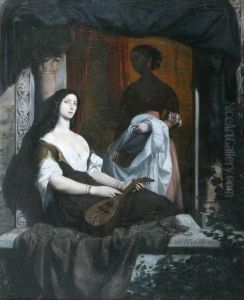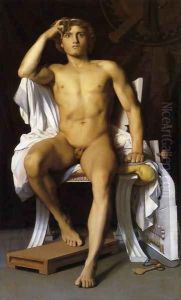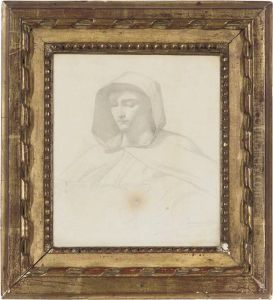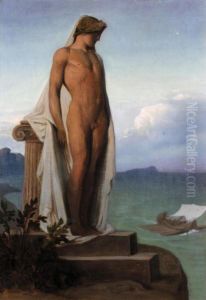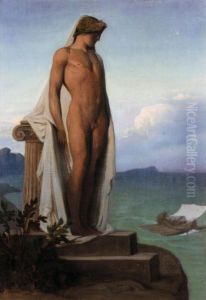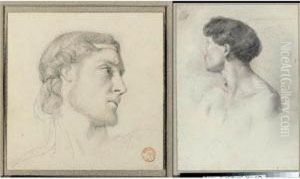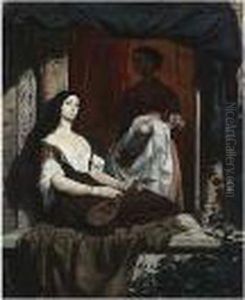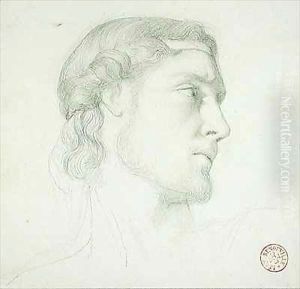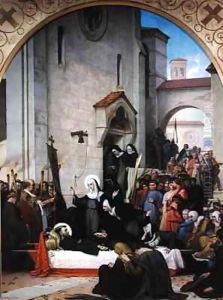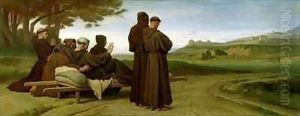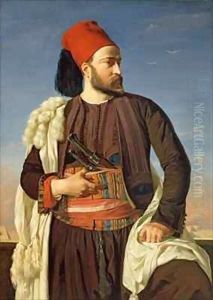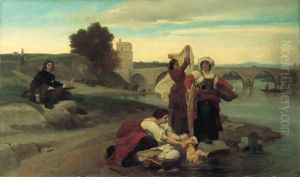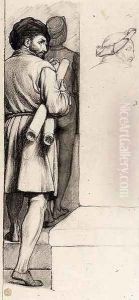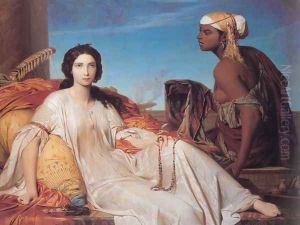Francois Leon Benouville Paintings
François-Léon Benouville was a French academic painter born on March 30, 1821, in Paris, France. He was the brother of Achille Benouville, also a painter, and the two were often associated in their artistic endeavors. François-Léon was a student of François-Édouard Picot and Léon Cogniet, two prominent French painters of the time. He showed a strong affinity for historical and religious subjects, which were popular during the 19th century among French academic painters.
Benouville's talent was recognized early in his career when he won the prestigious Prix de Rome in 1845 for his work 'St. Pierre guérissant les malades de son ombre' (Saint Peter Healing the Sick with His Shadow), which allowed him to study at the French Academy in Rome, the Villa Medici, for a period of five years. During his time in Rome, he was heavily influenced by the Italian Renaissance and the work of Raphael, which is evident in the clarity of his compositions and his attention to detail.
His stay in Italy had a profound effect on his painting style, and upon his return to France, his work reflected the inspiration he had drawn from the Italian masters. One of his notable works from this period is 'The Martyrdom of St. Symphorian' (displayed at the Musée d'Orsay in Paris), which was well-received and exemplified his mastery of historical narrative and composition.
Despite his success, François-Léon Benouville's career was cut short by his untimely death on February 16, 1859, in Paris. Although his life and career were brief, he left behind a body of work that continues to be appreciated for its historical significance and artistic merit. His work is characterized by its academic precision, its finely tuned technique, and its evocative use of religious and historical themes, which makes him a noteworthy figure in the history of 19th-century French art.
